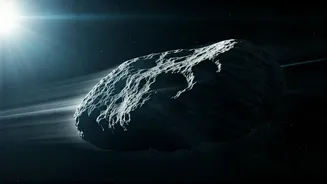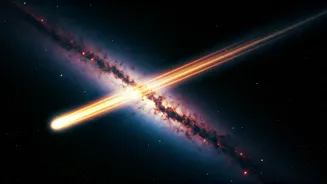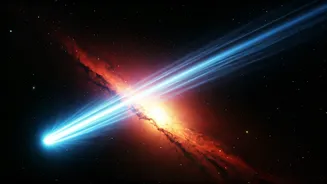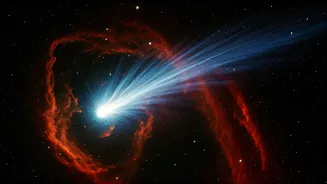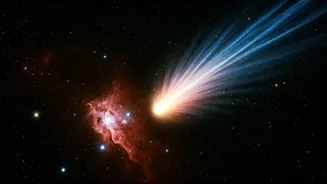The Solar System's Edge
Our solar system isn't simply a collection of planets neatly arranged around the Sun. Instead, it extends far beyond Neptune, the eighth planet from our
star, into a region known as the Kuiper Belt. This vast expanse is filled with icy bodies, leftover remnants from the solar system's formation. Observations of these objects, particularly their unusual orbits, have led scientists to hypothesize the presence of a much larger, unseen planet influencing their movements. This unseen celestial body has been nicknamed Planet Nine, and its possible existence has sparked excitement and curiosity among astronomers and the public alike. The idea of a ninth planet adds a layer of complexity and intrigue to our understanding of the solar system, potentially reshaping how we view our place in the cosmos. Further research is needed to validate the existence of Planet Nine and to determine its characteristics.
Orbital Anomalies Detected
The evidence for Planet Nine's existence stems primarily from the peculiar orbits of several Kuiper Belt Objects (KBOs). These icy bodies, which reside far beyond Neptune, exhibit unexpected clustering. Several KBOs share similar orbital characteristics, such as elongated paths and aligned orientations. This clustering behavior, in a region where gravitational forces from the known planets are minimal, has puzzled astronomers. It's difficult to explain why these distant objects should move in such coordinated ways unless influenced by a massive, unseen object. Calculations based on these observed orbits indicate the potential presence of a planet with a mass several times that of Earth, orbiting far beyond Neptune, which could provide the necessary gravitational tug to explain these anomalies. These clues have spurred extensive research into discovering Planet Nine and have increased interest within the scientific community to prove the existence of this mysterious ninth planet.
Hunting for Planet Nine
If Planet Nine exists, it is likely to be exceptionally far from the sun, potentially orbiting at a distance 20 times further than Neptune. This enormous distance makes it incredibly faint and challenging to spot using traditional telescopes. Scientists are employing several methods in their search. One approach involves using large telescopes to conduct all-sky surveys, searching for objects moving across the celestial sphere. These surveys can potentially reveal Planet Nine’s presence by its gravitational effect. Another technique involves carefully analyzing existing astronomical data. This method involves looking for subtle variations in the positions of stars and galaxies that could indicate the presence of a massive, unseen planet. Further, the upcoming construction of next-generation telescopes promises to significantly enhance these search efforts. These next-generation telescopes will be equipped with more powerful instruments, enabling astronomers to observe fainter objects and probe deeper into the solar system, thereby increasing the possibility of confirming the existence of Planet Nine.
What If It Exists?
The discovery of Planet Nine would revolutionize our understanding of the solar system's formation and evolution. Its existence would challenge existing models and force scientists to re-evaluate how planets form and how they interact with each other over billions of years. Moreover, Planet Nine's presence could explain the unusual orbital characteristics of other distant objects, providing a more complete picture of the solar system's dynamics. The discovery might also lead to the identification of additional, previously unknown objects in the outer solar system. A new planet can unlock mysteries regarding the distribution of mass and energy within our solar system. The discovery of Planet Nine will also open possibilities for future explorations by humankind, expanding our knowledge of the universe, and will reshape our understanding of the solar system.




